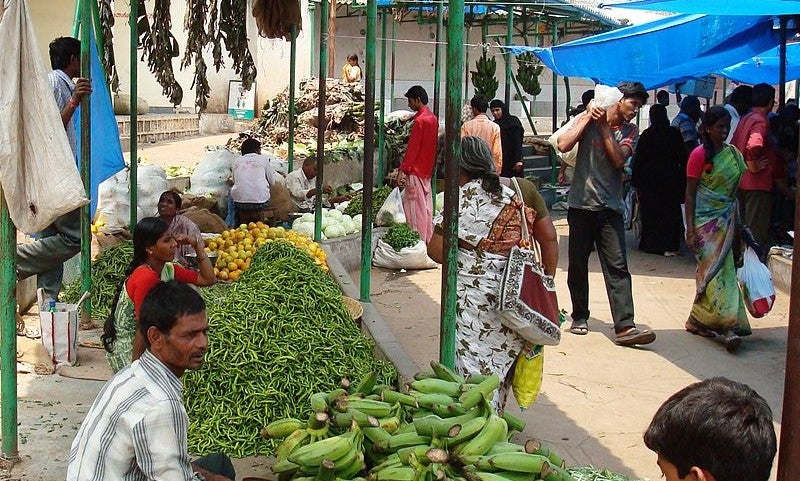India’s Strong GDP Growth: Will the Third Wave Spoil the Party?
Amitendu Palit
15 January 2022Summary
India’s gross domestic product is estimated to grow by 9.2 per cent in financial year 2021-22. This shows that the economy has turned around from the contraction suffered last year. However, high prices remain a concern, as does the potential impact of the ongoing third wave of the COVID-19 pandemic.
The first advance estimates of national income for financial year (FY) 2021-22, released by the Central Statistical Organisation of India on 7 January 2022, point to a strong recovery by the Indian economy. In real terms (that is, adjusted for inflation), India’s gross domestic product (GDP) is estimated to grow by 9.2 per cent in FY2021-22. The recovery is significant given that in FY20-21, India’s GDP had contracted by -7.3 per cent.
The heartening feature of India’s economic recovery is its broad-based character. In FY20-21, all sectors of the economy, except agriculture and electricity, had contracted. During FY2021-22, besides agriculture and electricity, which are growing at higher rates than the last year, all other sectors are projected to perform much better.
Within infrastructure, and on the basis of data available for the latest period, which is mostly up to November 2021, there are sharp recoveries in production of steel, coal and cement; cargo handled at sea ports and airports; and passengers travelling by air and railways. Among other major industries, commercial vehicle sales have sharply recovered during the year, underpinning an increase in consumer demand for vehicles in the country. The overall recoveries have led to an estimated growth of 14.3 per cent in mining and 12.5 per cent in manufacturing for the year.
Major service sectors like construction, trade, hotels, transport and communication have bounced back strongly. Construction is projected to grow by 10.7 per cent and trade, hotels, transport and communication by 11.9 per cent in this FY. Both these sectors are prominent employers and provide livelihood for several, including relatively low-skilled workers migrating from villages. Overall employment prospects for low-skilled and informal workers have improved significantly with the turnaround in both sectors.
Along with construction and trade, public administration and defence, which mostly comprise government services and activities, is estimated to grow by 10.7 per cent. Financial, real estate and professional services are projected to experience a comparatively lower growth of four per cent. This might be due to the real estate sector has not yet taken off with several unfinished projects continuing to suffer from lack of enough buyers.
An estimated GDP growth rate of 9.2 per cent shows that in FY2021-22, the economy has been able to overcome the setbacks created by the second wave of the COVID-19 pandemic. While the second wave – fuelled by the Delta variant – was far more lethal than the first, in terms of mortality rate and hospitalisation, it did not affect the economy as badly as the first. This was largely due to governments in India (both central and state) refraining from full-fledged lockdowns of the economy even at the peak of the second wave during April-May 2021.
There are, however, some worries for the economy going ahead. The most important among these is inflation. The nominal GDP growth (that is, at current prices) is estimated at 17.6 per cent, as against 9.2 per cent in real GDP. The difference between the two growth rates point to the impact of inflation, which has been significant.
Inflation, measured by the Wholesale Price Index, was 12.2 per cent till up to November 2021 with particularly sharp price rises for minerals and manufactured products. Inflation by the Consumer Price Index (CPI) for November 2021 was close to five per cent. While the rate of CPI inflation has softened from last year, particularly in food, overall prices remain much above comfortable levels. At their current rates, these prices will reduce the impact of nominal increases in wages and salaries of workers and employees in the sectors that are witnessing economic revival.
The third wave of the COVID-19 pandemic began in India in end-December 2021. As cases rise at an exponential rate and governments are forced to reintroduce curbs on social activities and movements, certain sectors such as tourism, hospitality, lifestyle and construction might again suffer setbacks. These sectors had come around in the second half of 2021 to record impressive growth. Fresh setbacks might see their growth faltering in the fourth quarter (January-March 2022) of FY2021-22. The faltering might affect the overall growth of the economy as well. In that case, expectations of the projected 9.2 per cent growth in GDP might not materialise.
. . . . .
Dr Amitendu Palit is a Senior Research Fellow and Research Lead (Trade and Economic Policy) at the Institute of South Asian Studies (ISAS), an autonomous research institute at the National University of Singapore (NUS). He can be contacted at isasap@nus.edu.sg. The author bears full responsibility for the facts cited and opinions expressed in this paper.
Photo credit: Wikimedia Commons
-
 More From :
More From :
-
 Tags :
Tags :
-
 Download PDF
Download PDF



